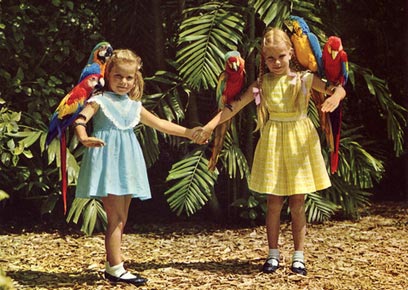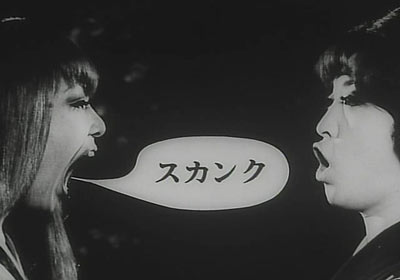science
When I was young, I invented an invisible friend called Mr Ravioli. My psychiatrist says I don’t need him anymore, so he just sits in the corner and reads.

While the Depravity Scale allows a ranking of just how depraved/horrific/ egregious specific behaviors are, the GASP scale allows us to assess the level to which others (or ourselves) are prone to guilt and shame reactions.
There are, perhaps not surprisingly, disagreements among researchers about how to distinguish between guilt and shame. According to some, guilt is largely focused on your behavior (“I did a bad thing”) while shame is focused on your character (“I am a bad person”). Others think that private (that is, not publicly known) bad behaviors cause guilt, where transgressions that are made public cause shame.
photo { Christopher Payne }
Scott, things aren’t as happy as they used to be down here at the Unemployment Office

Theorists began in the 1960s to consider the possibility of symmetries that are “broken.” That is, the underlying equations of physics might respect symmetries that are nevertheless not apparent in the actual physical states observed. The physical states that are possible in nature are represented by solutions of the equations of physics. When we have a broken symmetry, the solutions of the equations do not respect the symmetries of the equations themselves.
The elliptical orbits of planets in the solar system provide a good example. The equations governing the gravitational field of the sun, and the motions of bodies in that field, respect rotational symmetry—there is nothing in these equations that distinguishes one direction in space from another. A circular planetary orbit of the sort imagined by Plato would also respect this symmetry, but the elliptical orbits actually encountered in the solar system do not: the long axis of an ellipse points in a definite direction in space.
At first it was widely thought that broken symmetry might have something to do with the small known violations of symmetries like mirror symmetry or the eightfold way. This was a false lead. A broken symmetry is nothing like an approximate symmetry, and is useless for putting particles into families like those of the eightfold way.
But broken symmetries do have consequences that can be checked empirically. Because of the spherical symmetry of the equations governing the sun’s gravitational field, the long axis of an elliptical planetary orbit can point in any direction in space. This makes these orbits acutely sensitive to any small perturbation that violates the symmetry, like the gravitational field of other planets. For instance, these perturbations cause the long axis of Mercury’s orbit to swing around 360° every 2,254 centuries.
In the 1960s theorists realized that the strong nuclear forces have a broken symmetry, known as chiral symmetry.
How do I look? You look ready.
According to Maslow we have five needs [diagram]. However, many other people have thought about what human beings need to be happy and fulfilled, what we strive for and what motivates us, they have come up with some different numbers. (…)
David McClelland (1985) proposed that, rather than being born with them, we acquire needs over time. They may vary considerably according to the different experiences we have, but most of them tend to fall into three main categories. Each of these categories is associated with appropriate approach and avoidance behaviours.
Achievement. People who are primarily driven by this need seek to excel and to gain recognition for their success. They will try to avoid situations where they cannot see a chance to gain or where there is a strong possibility of failure.
Affiliation. People primarily driven by this need are drawn towards the achievement of harmonious relationships with other people and will seek approval. They will try to avoid confrontation or standing out from the crowd.
Power. People driven by this need are drawn towards control of other people (either for selfish or selfless reasons) and seek compliance. They will try to avoid situations where they are powerless or dependent. (…)
Martin Ford and C.W. Nichols seem to have gone a bit overboard. Their taxonomy of human goals has two dozen separate factors.
Have you ever been attacked by a crow or similar large bird?
Fishes do it; reptiles do it; birds do it; mammals do it; monkeys do it; we do it. It is not about food or sex; it is about passing pains: A hurts B, B vents on C, and so on, until the last one in the chain, be it the omega individual in the hierarchy or an inanimate object, absorbs the entire grudge.
In contrast to sexual selection, research on redirected aggression, a major topic in classical ethology, has been a haphazard sidekick in recent decades, despite occasional bright spots.
David Barash and Judith Lipton’s recent book, Payback, assertively reiterates the importance of the issue in the study of evolutionary psychology and behavioral biology. (…) Payback unfurls a kaleidoscopic diversity of instances of revenge, retaliation, and redirected aggression—the so-called Three Rs—in both animals and humans under a vast array of circumstances.
Quantum in se est

Ever felt a little incoherent? Or maybe you’ve been in two minds about something, or even in a bit of delicate state. Well, here’s your excuse: perhaps you are in thrall to the strange rules of quantum mechanics. (…)
On one level, you might think, we shouldn’t be surprised that life has a quantum edge. After all, biology is based on chemistry, and chemistry is all about the doings of atomic electrons - and electrons are quantum-mechanical beasts at heart. That’s true, says Jennifer Brookes, who researches biological quantum effects at Harvard University. “Of course everything is ultimately quantum because electron interactions are quantised.”
On another level, it is gobsmacking. In theory, quantum states are delicate beasts, easily disturbed and destroyed by interaction with their surroundings. So far, physicists have managed to produce and manipulate them only in highly controlled environments at temperatures close to absolute zero, and then only for fractions of a second. Finding quantum effects in the big, wet and warm world of biology is like having to take them into account in a grand engineering project, says Brookes. “How useful is it to know what electrons are doing when you’re trying to build an aeroplane?” she asks.
Take smell, Brookes’s area of interest. For decades, the line has been that a chemical’s scent is determined by molecular shape. Olfactory receptors in the nose are like locks opened only with the right key; when that key docks, it triggers nerve signals that the brain interprets as a particular smell.
Is that plausible? We have around 400 differently shaped smell receptors, but can recognise around 100,000 smells, implying some nifty computation to combine signals from different receptors and process them into distinct smells. Then again, that’s just the sort of thing our brains are good at. A more damning criticism is that some chemicals smell similar but look very different, while others have the same shape but smell different. The organic compounds vanillin and isovanillin, for example, smell differently but are two similarly shaped arrangements of the same molecule.
There is an alternative explanation. Around 70 years ago, even before the lock-and-key mechanism was suggested, the distinguished British chemist Malcolm Dyson suggested that, just as the brain constructs colours from different vibrational frequencies of light radiation, it interprets the characteristic frequencies at which certain molecules vibrate as a catalogue of smells.
photo { Steven Brahms }
Fab Five Freddy said everybody’s high

The “Big Five” factors of personality are five broad domains or dimensions of personality which are used to describe human personality. (…)
Openness to experience – (inventive/curious vs. consistent/cautious). Appreciation for art, emotion, adventure, unusual ideas, curiosity, and variety of experience.
Conscientiousness – (efficient/organized vs. easy-going/careless). A tendency to show self-discipline, act dutifully, and aim for achievement; planned rather than spontaneous behaviour.
Extraversion – (outgoing/energetic vs. solitary/reserved). Energy, positive emotions, surgency, and the tendency to seek stimulation in the company of others.
Agreeableness – (friendly/compassionate vs. cold/unkind). A tendency to be compassionate and cooperative rather than suspicious and antagonistic towards others.
Neuroticism – (sensitive/nervous vs. secure/confident). A tendency to experience unpleasant emotions easily, such as anger, anxiety, depression, or vulnerability.
related { The Psychology of Unusual Handshakes. }
screenshot { Wallace Shawn quoting Ingmar Bergman in Louis Malle’s My Dinner with Andre, 1981 }
‘Let’s not forget that the little emotions are the great captains of our lives and we obey them without realizing it.’ –Van Gogh
Humans have a perplexing tendency to fear rare threats such as shark attacks while blithely ignoring far greater risks like unsafe sex and an unhealthy diet. Those illusions are not just silly—they make the world a more dangerous place. (…)
What they found, and what they have continued teasing out since the early 1970s, is that humans have a hell of a time accurately gauging risk. Not only do we have two different systems—logic and instinct, or the head and the gut—that sometimes give us conflicting advice, but we are also at the mercy of deep-seated emotional associations and mental shortcuts.
Even if a risk has an objectively measurable probability—like the chances of dying in a fire, which are 1 in 1,177—people will assess the risk subjectively, mentally calibrating the risk based on dozens of subconscious calculations. If you have been watching news coverage of wildfires in Texas nonstop, chances are you will assess the risk of dying in a fire higher than will someone who has been floating in a pool all day. If the day is cold and snowy, you are less likely to think global warming is a threat.
‘The second half of a man’s life is made up of nothing but the habits he has acquired during the first half.’ –Dostoevsky
It’s one of the worst-kept secrets of family life that all parents have a preferred son or daughter, and the rules for acknowledging it are the same everywhere: The favored kids recognize their status and keep quiet about it. (…) The unfavored kids howl about it like wounded cats. And on pain of death, the parents deny it all. (…)
65% of mothers and 70% of fathers exhibited a preference for one child, usually the older one. (…) “The most likely candidate for the mother’s favorite was the firstborn son, and for the father, it was the last-born daughter. ” (…)
Firstborns have a 3-point IQ advantage over later siblings. (…)
Not all experts agree on just what the impact of favoritism is, but as a rule, their advice to parents is simple: If you absolutely must have a favorite (and you must), keep it to yourself.
Genetic red–green color blindness affects males much more often than females, because the genes for the red and green color receptors are located on the X chromosome, of which males have only one and females have two

{ Philippe Parreno, Argentina vs. Netherlands 1978, Medina, 2003, and Space World, Kitakyushu, 2003 | more | Quote: Red-green color blindness | Wikipedia }
Bellax, acting like a bellax. And so the triptych vision passes.

When a person meets you for the first time they ask themselves two questions. The answers to these two questions will have all sorts of knock-on effects for how they think about you and how they behave towards you.
Professor Susan Fiske of Princeton University has shown that all social judgements can be boiled down to these two dimensions:
1. How warm is this person?
The idea of warmth includes things like trustworthiness, friendliness, helpfulness, sociability and so on. Initial warmth judgements are made within a few seconds of meeting you.2. How competent is this person?
Competency judgements take longer to form and include things like intelligence, creativity, perceived ability and so on.
photo { Garry Winogrand, Mayor John Lindsay with New York City Police, 1969 }
I want the love worth living, I want the things I sing
Singing is a cultural universal and an important part of modern society, yet many people fail to sing in tune. Many possible causes have been posited to explain poor singing abilities; foremost among these are poor perceptual ability, poor motor control, and sensorimotor mapping errors. To help discriminate between these causes of poor singing, we conducted 5 experiments testing musicians and nonmusicians in pitch matching and judgment tasks. (…)
The pattern of results across experiments demonstrates multiple possible causes of poor singing, and attributes most of the problem to poor motor control and timbral–translation errors, rather than a purely perceptual deficit, as other studies have suggested.
related { Lifelong musicians experience less age-related hearing problems than non-musicians }
Everybody’s dick looks big on 60-inch TV. My sister’s dick looks big on TV.
With the growing permeation of online social networks in our everyday life, scholars have become interested in the study of novel forms of identity construction, performance, spectatorship and self-presentation onto the networked medium. This body of research builds upon a rich theoretical tradition on identity constructivism, performance and (re)presentation of self. With this article we attempt to integrate the work of Italian playwright Luigi Pirandello into this tradition.
Pirandello’s classic 1925 novel Uno, Nessuno, Centomila (“One, No One and One Hundred Thousand”) recounts the tragedy of a man who struggles to reclaim a coherent identity for himself in the face of an inherently social and multi-faceted world. Via an innocuous observation of his wife, the protagonist of the novel, Vitangelo Moscarda, discovers that his friends’ perceptions of his character are not at all what he imagined and stand in glaring contrast to his private self-understanding. In order to upset their assumptions, and to salvage some sort of stable identity, he embarks upon a series of carefully crafted social experiments.
Though the novel’s story transpires in a pre-digital age, the volatile play of identity that ultimately destabilizes Moscarda has only increased since the advent of online social networks. The constant flux of communication in the online world frustrates almost any effort at constructing and defending unitary identity projections. Popular social networking sites, such as Facebook and MySpace, offer freely accessible and often jarring forums in which widely heterogeneous aspects of one’s life—that in Moscarda’s era could have been scrupu- lously kept apart—precariously intermingle. Disturbances to our sense of a unified identity have become a matter of everyday life.
Pirandello’s prescient novel offered readers in its day the contours of an identity melee that would unfurl on the online arena some 80 years later.
Pig shit. The lights, the motors, the vehicles, all run by a high-powered gas called methane. And methane cometh from pig shit.
In the famous equation E=mc2 that equates mass with the energy contained within it, the “c” represents the speed of light. If particles go faster than light, things become troublesome.
Under such a scenario, an observer in a rocket ship traveling near the speed of light who was watching the Gran Sasso experiment taking place, “would detect the neutrino before it was emitted—they’d see it going backwards in time,” said Dr. Turok.
{ WSJ | Continue reading | More: Measurement of the neutrino velocity with the OPERA detector in the CNGS beam | PDF }
Ah mah gah

It looks like the future is finally here. I wasn’t quite sure how it was going to present itself, but it seems to have come in the form of UC Berkeley scientists who have developed a “decoder” that can measure our brain activity and reconstruct our visual experiences. In other words, 20 years from now we might not ask eye-witnesses to describe a suspect… we’ll just analyze their brain activity and reconstruct the suspect’s image for ourselves.
photo { Howard Bond, Car Hood I, Ontario, 1984 }
And now you can go back to just being you, instead of a one-dimensional character with a silly catchphrase
People don’t like changing their minds. Most research ties this tendency to things like status quo biases, sunk cost effects, and inaction inertia, but a new study by researchers at the University of Oslo investigates whether there is a connection between changing our minds and feelings of regret.
Through a series of experiments they discovered that people who change their minds experience more regret than those who don’t, even when the new decisions lead to positive outcomes.
‘The better telescopes become, the more stars appear.’ –Julian Barnes
An Italian experiment has unveiled evidence that fundamental particles known as neutrinos can travel faster than light. (…)
Neutrinos are fundamental particles that are electrically neutral, rarely interact with other matter, and have a vanishingly small mass. But they are all around us—the sun produces so many neutrinos as a by-product of nuclear reactions that many billions pass through your eye every second.
‘Not that we needed all that for the trip, but once you get locked into a serious drug collection, the tendency is to push it as far as you can.’ –Hunter S. Thompson

Paranormal experiences – whether it’s a psychic or an out-of-body experience or seeing a ghost – may not tell you anything about the world of the supernatural, because that world doesn’t exist, but those experiences still tell you about how your brain and mind operate. (…)
Tell us about his $1 million prize.
He has a long-standing financial reward if anyone can prove under test conditions that they’re psychic. There are various people who act as testers for him in various countries – I’m one of them in the UK. I’ve tested a few people. And it probably says something about the psychic world that in the 10 years that the prize has been up for grabs, no-one has come even close to claiming it. I tested a woman called Patricia Putt who was convinced she could give psychic readings for people, and that they would recognise their past and present in those readings. So we had lots of people come in, she would write down her readings, then we showed them to people and said you had to choose yours out of all of them. And suddenly they were at a loss. That’s because when you go for a psychic reading you know it’s meant for you. You’re sitting there, there are all these ambiguous comments, you can read into them and suddenly be impressed. Once you take away that mechanism everything collapses. (…) A million dollars – quite a large sum of money – is sitting there waiting for the first psychic who can prove they have these abilities. (…)
Does the soul weigh 21 grams?
That is where the movie title comes from. This was an American psychologist around the turn of the 20th century who put dogs onto scales, trying to weigh their souls leaving. He had some success with that, then tried the same with humans – putting very old people on the scales and waiting for them to die. But what he didn’t control for is sweating, moisture leaving the body. So 21 grams is probably much closer to the amount of moisture you lose when you die than your soul.
What exactly is a near-death experience?
A near-death experience is very similar to an out-of-body experience, which is where people think they’re floating away from their body, turned around seeing their body lying there. In a near-death experience, there is often a tunnel of light you go down towards meeting your maker. The gods you see depend very much on the culture you live in. Then the god turns you back, you return into your body and you wake up.
As we know more about how the brain creates a sense of where it is, we know more about how these experiences can be created. Now there are experiments where we can create an out-of-body experience fairly rapidly. Other researchers – and Mary Roach talks about these – write target numbers or words on pieces of cardboard and place them on top of cabinets and wardrobes in hospital wards, in the hope that somebody having a near-death or out-of-body experience will look down and see them. To date they haven’t. Which again suggests that this is an illusion rather than a genuine experience.
artwork { Alex Grey, Kissing, 1983 }
‘From one, learn all.’ –Virgil
Dolphins are known to make three types of sounds: whistles, clicks and burst pulses. Whistles are thought to be identification sounds, like names, while clicks are used to navigate and to find prey with echolocation.
Burst pulses, which can sound like quarreling cartoon chipmunks, are a muddy mixture of the two, and Dr. Herzing believes that much information may be encoded in these sounds, as well as in dolphins’ ultra-high frequencies, which humans cannot hear.
The two-way system she will test next year is being developed with artificial intelligence scientists at Georgia Tech. It consists of a wearable underwater computer that can make dolphin sounds, but also record and differentiate them in real time. It must also distinguish which dolphin is making the sound, a common challenge since dolphins rarely open their mouths.
Alius et idem
Are you a verbal learner or a visual learner? Chances are, you’ve pegged yourself or your children as either one or the other. (…) But does scientific research really support the existence of different learning styles, or the hypothesis that people learn better when taught in a way that matches their own unique style?
Unfortunately, the answer is no, according to a major new report.













